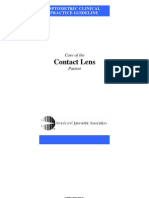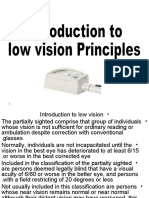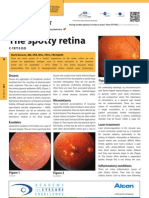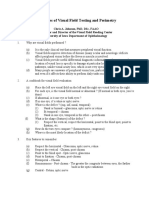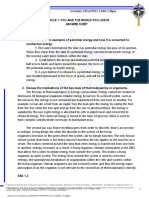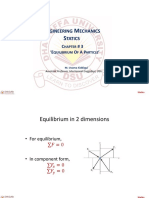0% found this document useful (0 votes)
231 views16 pagesVisual Field Testing
Visual field testing examines three key areas: fixation losses, false positives, and false negatives. Fixation losses occur when a patient sees a stimulus in their blind spot, indicating eye movement. False positives are when a patient responds when no stimulus is present, possibly due to anxiety. False negatives are when a patient fails to see a stimulus they previously saw, often due to fatigue. The results are analyzed using sensitivity plots, grayscale maps, deviation maps, and defect identification to locate potential vision issues. Common defects include constriction, scotomas, hemianopia, and quadrantanopia which can indicate problems in the retina, optic nerve, or brain.
Uploaded by
Leigh-Ann AmorosoCopyright
© © All Rights Reserved
We take content rights seriously. If you suspect this is your content, claim it here.
Available Formats
Download as DOCX, PDF, TXT or read online on Scribd
0% found this document useful (0 votes)
231 views16 pagesVisual Field Testing
Visual field testing examines three key areas: fixation losses, false positives, and false negatives. Fixation losses occur when a patient sees a stimulus in their blind spot, indicating eye movement. False positives are when a patient responds when no stimulus is present, possibly due to anxiety. False negatives are when a patient fails to see a stimulus they previously saw, often due to fatigue. The results are analyzed using sensitivity plots, grayscale maps, deviation maps, and defect identification to locate potential vision issues. Common defects include constriction, scotomas, hemianopia, and quadrantanopia which can indicate problems in the retina, optic nerve, or brain.
Uploaded by
Leigh-Ann AmorosoCopyright
© © All Rights Reserved
We take content rights seriously. If you suspect this is your content, claim it here.
Available Formats
Download as DOCX, PDF, TXT or read online on Scribd
/ 16



















